|

Poster made by @Liu Huihui If you are a tea lover, you will surely be able to find the taste you like when you come to Anhui. Anhui is a major tea-producing province. Huangshan Maofeng, Taiping Houkui, Keemun Black Tea, and Lu'an Melon Seed Tea are known as the "Four Famous Teas in Anhui." On the evening of November 29, the "Traditional tea processing techniques and their associated social practices in China" were added to UNESCO's Representative List of the Intangible Cultural Heritage of Humanity. These include Huangshan Maofeng, Taiping Houkui, Keemun black tea, and Lu'an Melon Seed tea's processing techniques. Do you know how complex the production process of Anhui's "Four Famous Teas" is? This article will give you the answer. 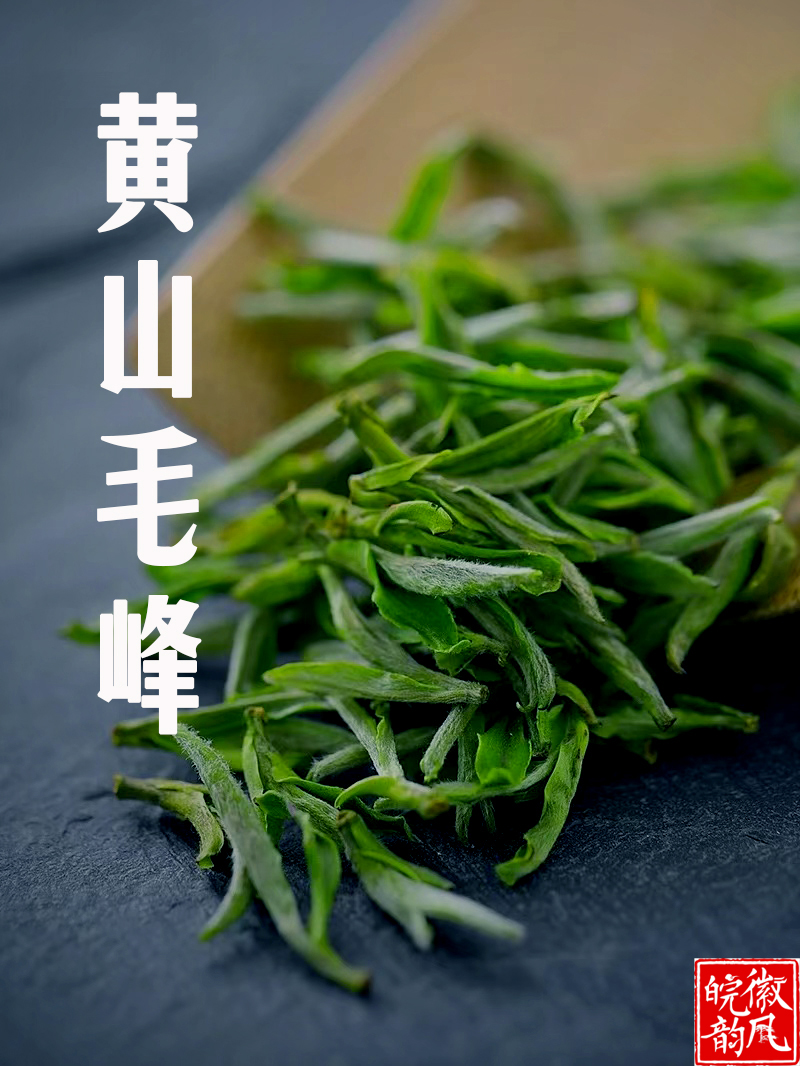
Huangshan Maofeng Famous mountains must have sacred plants. Huangshan has been producing tea since ancient times, and its quality has been highly praised. Huangshan Maofeng got its name in the late Qing Dynasty. The tea maker selected the best buds and leaves before the Qingming Festival. After finely frying and roasting them into tea, they found that the tea was "covered with white hairs, and the buds pointed like peaks," so they named it "Maofeng (fur peak)" and later named it "Huangshan Maofeng." The primary production process of Huangshan Maofeng consists of three steps: shaqing (enzyme inactivation), rounian (squeezing), and roasting. The key is to use high temperatures to destroy the activity of oxidase in the fresh tea leaves, prevent polyphenol compounds from being oxidized by the enzyme to maintain their emerald green color, and form a unique aroma, taste, and shape. 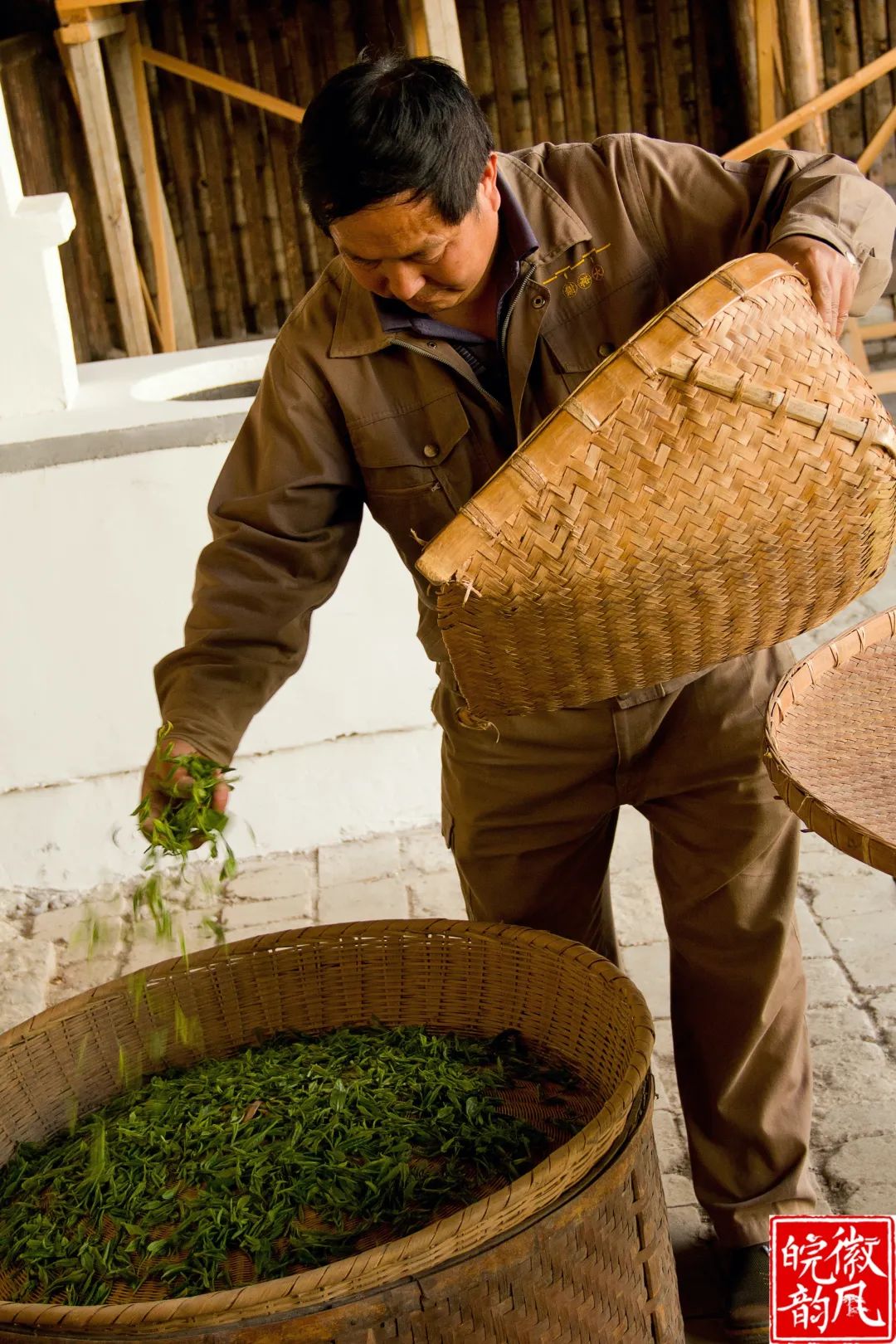
Shaqing (enzyme inactivation): Stir-fry on the pan gently and fast with one hand, 60 times per minute is appropriate. The leaves should be raised high, and be spread on the pan scatteredly to make them evenly heated. Clean them up thoroughly and leave no remaining leaves in the pan afterwards, so as to avoid the remaining leaves from being overheated and scorched. Rounian (squeezing):When the shaqing is done to an appropriate level, grab and squeeze the leaves in the pan several times with your hands to knead and straighten them. For superfine and first-grade tea leaves, just grab them a few times in the pan. After the second and third-grade raw materials are finished and removed from the pan to dissipate heat, gently knead for 1 to 2 minutes until the leaves are slightly curled. Rub and shake at the same time slowly and gently. Roasting: Roast is divided into primary roast and full roast. During primary roast, each shaqing pan is accompanied with four roasting baskets, and the temperature is high first and then low. It is necessary to turn over the leaves while roasting, and move the roasting top sequentially. The leaves should be turned frequently and be spread evenly. The action should be gentle, and the fire temperature should be stable. When there are 8 to 10 piles of primary roasted leaves, they should be put together and then be fully roasted. The temperature should be about 60°C when fully roasting. Roast slowly until the tea leaves are dry enough. Remove the impurities and reheat to make the tea aroma diffuse, then put it into an iron cylinder while it is hot, and seal it for storage. Taiping Houkui 
Taiping Houkui is the green tea with the largest leaves in the world. Its shape does not scatter, warp or bend. After being brewed in a cup, the buds and leaves are fragrant and elegant, just like flowers. So Taiping Houkui is described as "the prince among green teas" suitably. The harvest time of Taiping Houkui lasts half a year from the opening of the tea plantation in Guyu(Grain Rain) to the end of Lixia(Beginning of summer). Its production consists of four processes: shaqing, primary roast, full roast, and reheat. The following describes these procedures in detail. 
△(Located in the workshop of Liubaili Houkui Tea Industry Co., Ltd. in Huangshan District, Huangshan City, the staff is frying Houkui. @Fan Bowen) Shaqing (enzyme inactivation): Use barrel pots with a diameter of 70 cm; the pot's surface must be smooth and clean. Use charcoal as fuel to ensure a stable pot temperature. When the pot temperature reaches about 110°C, put 75 to 100 grams of tea into each pot. The stir-frying lasts 2 to 3 minutes. The operator must stir the tea leaves gently and evenly and pour out all the leaves when finished. Before finishing, the tea should be kneaded appropriately. The finished tea leaves should be sharp and complete, with the stems and leaves connected, naturally straight, and the leaf surface extended. Primary roast: Each pot is accompanied by four roasting baskets, and their fire temperature should be 100°C, 90°C, 80°C, and 70°C. After the leaves are spread on the top of the basket, pat lightly to make the leaves spread evenly. Start the second roast after proper dehydration. First, spread the buds and leaves evenly, and press the tea leaves gently with your hands while roasting, so that the leaves lie flat and hold the buds with a straight shape. During the third roasting, lower the temperature. It is still necessary to press while roasting. When starting the fourth roasting, the leaves should already be crisp and can no longer be pressed. When it is 60% or 70% dry, take it down and cool it. (In the workshop of Liubaili Houkui Tea Industry Co., Ltd. in Huangshan District, Huangshan City, the staff is roasting the tea leaves. @Fan Bowen) ▼ 
Full roast: Put in about 250 grams of tea leaves, and the fire temperature should be about 70°C. Using brocade cushions to press the leaves while roasting is necessary to fix their shape. After 5 to 6 times of stir-frying and when the tea leaves are about 90% dry, take them down and spread them out. (In the Taoyuan Wild Tea Valley of Liubaili Houkui Tea Industry Co., Ltd. in Huangshan District, Huangshan City, tea farmers are busy picking Houkui new tea. @Fan Bowen) ▼ 
Reheat: Also known as redrying. Put in about 1900 grams of tea leaves. Stir and turn the leaves when the fire temperature is about 60 ℃. Don't press them. After the tea is completely dried, load it into a cylinder while it is hot, and put reed leaves, so there is a saying that "tea is grass, and reed is the treasure." After the tea is cooled, cover and seal it. Keemun black tea 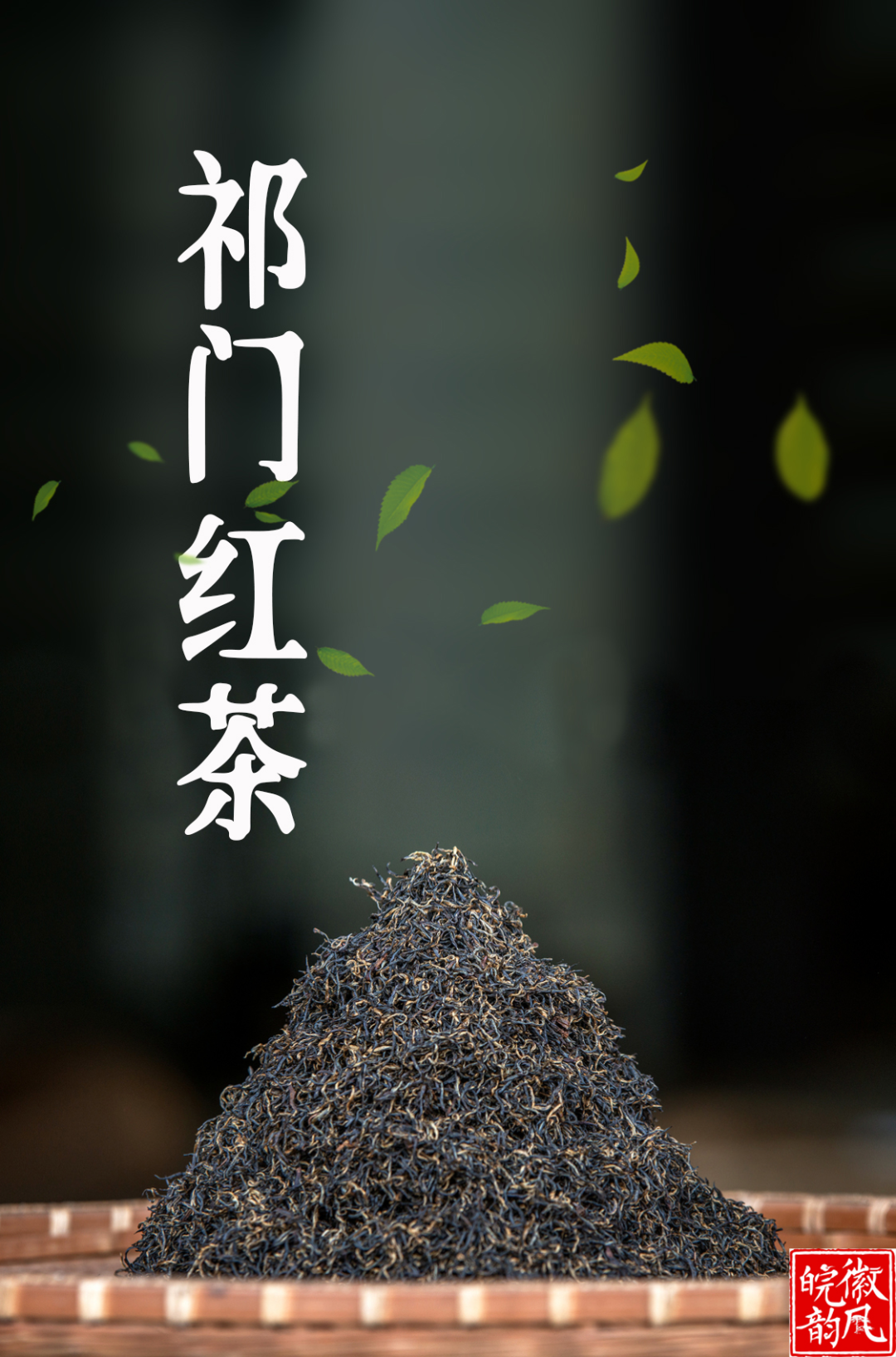
Keemun black tea is recognized as one of the three black teas in the world with a more intense flavor. The shape of the tea leaves is tight, thin, well-proportioned, and beautiful. The unique "Keemun fragrance" smells like flowers and honey. The tea forms a golden circle on the cup's rim, as noble as a queen with gold rims. At the Anhui global promotion event held in April 2017, Keemun black tea was highly praised by Foreign Minister Wang Yi: "Although it is my first time to taste it, the fragrance still lingers in my mouth," and praised "Keemun black tea has a very mellow taste of Anhui!" The picking period of Keemun black tea generally includes spring and summer. The best harvest time is after the Qingming Festival and before the Grain Rain of the lunar calendar. The first batch of black tea picked at this time will likely become the national gift-grade Keemun later. The primary production is the basis for the Keemun's quality. It is divided into four steps: weidiao (withering), rounian (pressing), fajiao (oxidation or fermentation), and drying. Keemun will be crucially affected by each process. Weidiao (withering): Spread the picked fresh leaves in the air to make the water in the leaves disperse evenly so that the leaves will wither naturally. If the environment is affected during this period, it will significantly affect the quality of the tea. 
Rounian (pressing): Knead the withered tea leaves like kneading dough to press out the tea juice and break the tea cells. At this time, the tea polyphenols will be chemically oxidized in contact with oxygen, which is also conducive to forming a black tea aroma. Fajiao (oxidation or fermentation): Nowadays, most of them use professional fermentation rooms to get the work done, which saves time and effort, and the quality is more stable. Drying: By roasting at high temperatures, the water in the fermented tea leaves evaporates to keep the leaves dry. At this point, the entire primary production process is completed. The tea at this stage is called Maocha (pre-finished tea), which must be refined before it can become commercial tea. The refining procedure is divided into four processes: screening, picking, reheating, and piling. Screening. @Lin Jian ▼ 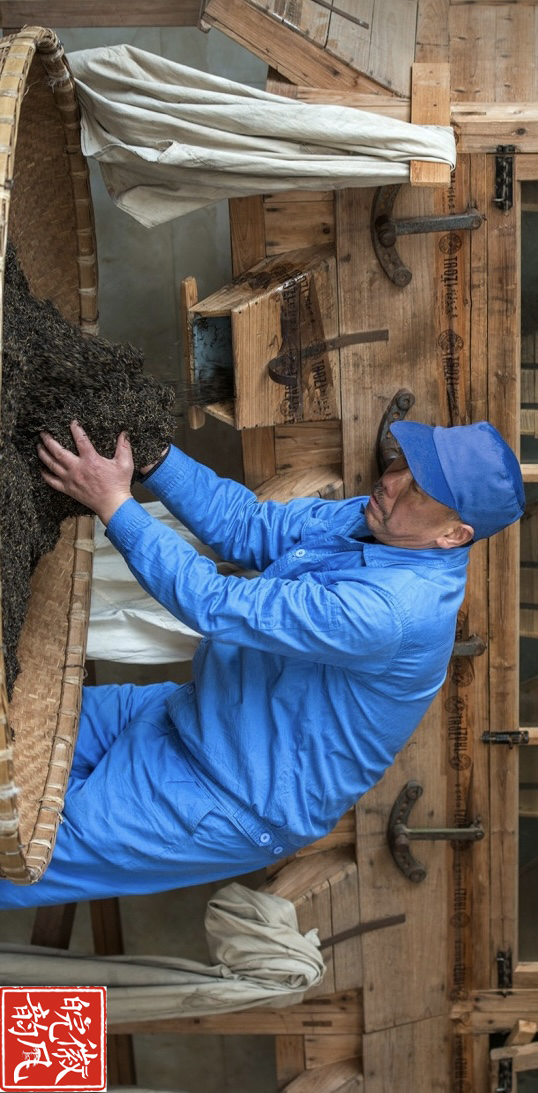
Screening: The tea leaves of different grades are separated by screening the Maocha (pre-finished tea). Screening is one of the most critical techniques for refining Keemun black tea, and it can be divided into several small processes, such as pre-sieving and shaking-sieving. Sorting and Picking: Remove the light leaves, broken leaves, yellow leaves, tea stalks, and impurities from the sifted tea leaves. This work is mainly done by female workers by hand. Reheating: put the sieved tea leaves into bags; each bag contains about 2.5 kg; put them on the roasting basket, and roast them with the charcoal fire under the basket. Lift the bag and shake it every 3 or 4 minutes until it turns brown-gray. Piling: Mix the tea leaves after reheating and pour them into a pile. Rake them into tiny heaps, then make a large pile according to the above-mentioned method so that the tea leaves are mixed evenly and can be packed into refined black tea. 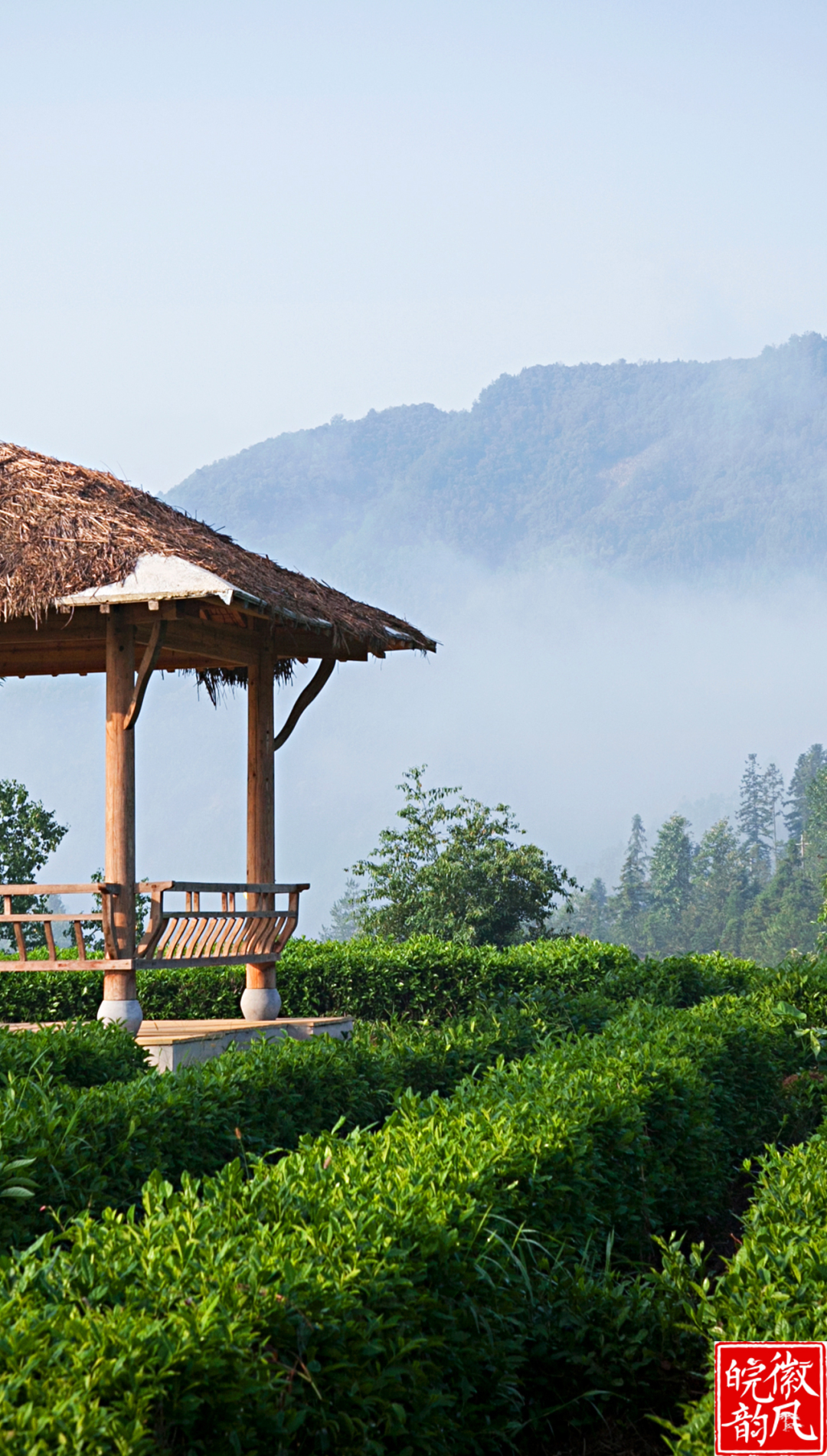
△The Spring Tea Plantation Lu'an Melon Seed tea 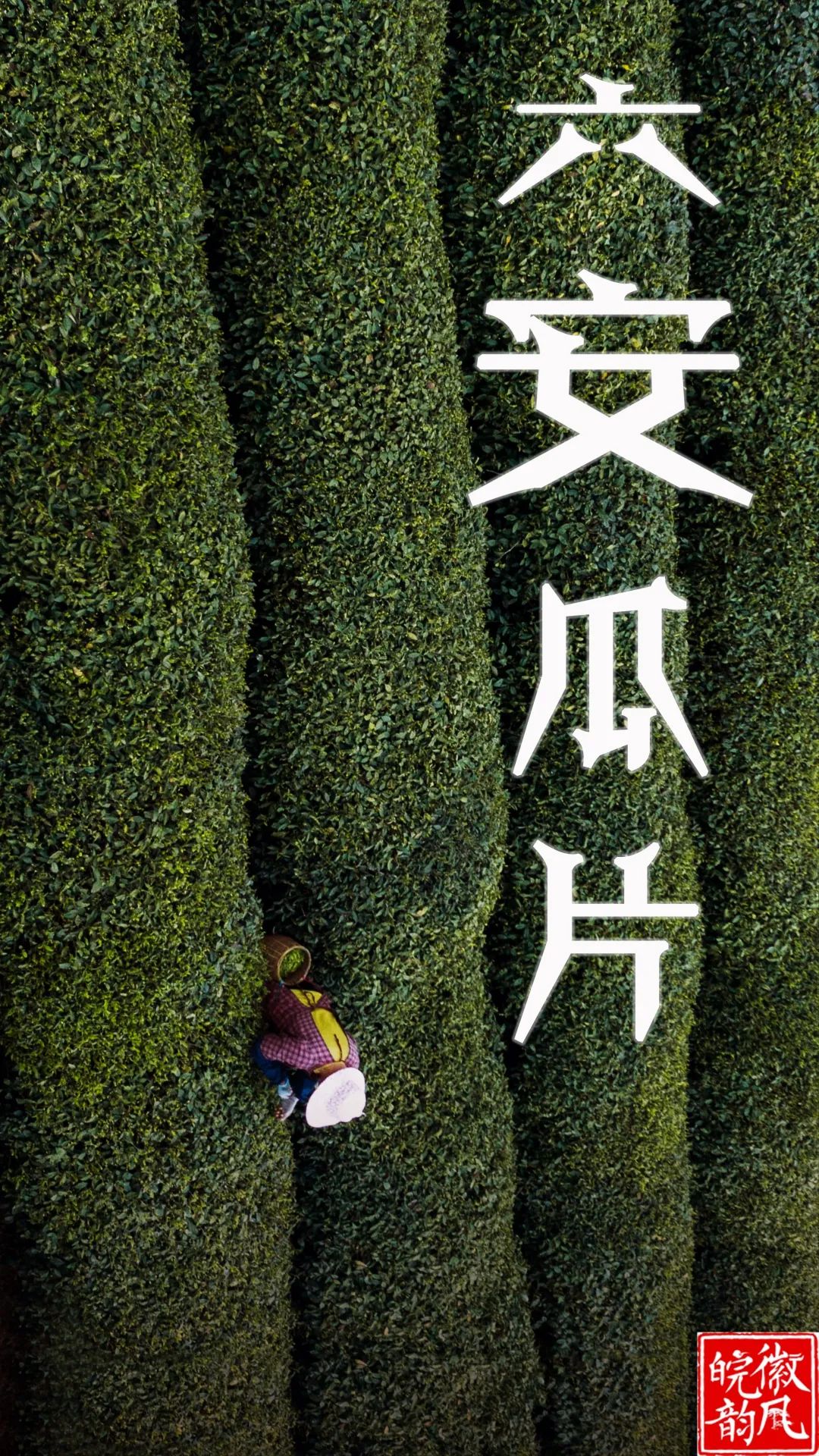
In the Dabie Mountains in spring, strolling in the green and verdant Lu'an Tea Valley, the faint tea fragrance mixed with the smell of the soil of the mountains, diffuses at the tip of the nose, and the whole body and mind are immersed in the tea fragrance. Here is the main production area of Lu'an Melon Seed tea, which is located in the deep mountains. The shape of Lu'an Melon Seed tea is exquisite and simple, the aroma is lingering, and the taste is mellow, like a hermit walking from the mountains. Lu'an Melon Seed tea's harvest time is usually around Grain Rain, and the picking standard is mainly one bud and two to three leaves. The leaves picked need a certain degree of maturity. Leaves that are too tender contain too much water and cannot be shaped after frying. Lu'an Melon Seed tea's stir-frying procedure is divided into five processes: raw pot, heated pot, mild heat, low heat, and heavy heat. (Lu'an Melon Seed tea Co., Ltd. National Intangible Cultural Heritage Art Exhibition Center Base, the key process of making Lu'an Melon Seed tea – stir-frying the leaves. @Zheng Jinqiang) ▼ 
Raw pot and heated pot: Put two pots adjacent to each other. Set the temperature of the raw pot to about 100°C and the heated pot slightly lower. Put in about 100 grams of tea leaves; the amount can be reduced for tender leaves and slightly increased for harsh tea. After the leaves are put into the pot, stir-fry them with a bamboo brush for 1-2 minutes until they become soft. Then sweep the leaves from the raw pot into the heated pot, and pat them while frying so the leaves gradually become flakes. The tender leaves should be lifted and stir-fried gently to preserve their color and shape. When stir-frying the rough tea, grab the broom firmly and pat them into tea flakes. Keep stir-frying until the leaves are shaped. When the moisture content reaches about 30%, remove the leaves from the pot. 
△(In a tea house in Laojie, Dushan Town, Lu'an City, an old tea farmer is roasting tea with chestnut charcoal. @Zheng Jinqiang) Mild heat: Roast the tea with the charcoal fire in a roasting basket. Put about 1.5 kilograms of tea leaves in each basket, with the temperature at the top of about 100°C until the leaves are 80% to 90% dry. After picking out the yellow leaves, floating leaves, red stems, and old leaves, mix the tender leaves and old leaves evenly. Low heat: It should be carried out one day after the simmering at the latest, with 2.5 to 3 kg of leaves per basket. The temperature should be manageable, and keep roasting until it is almost dry. (Lu'an Melon Seed tea made by a tea shop in the old street of Dushan Town. @Zheng Jinqiang) ▼ 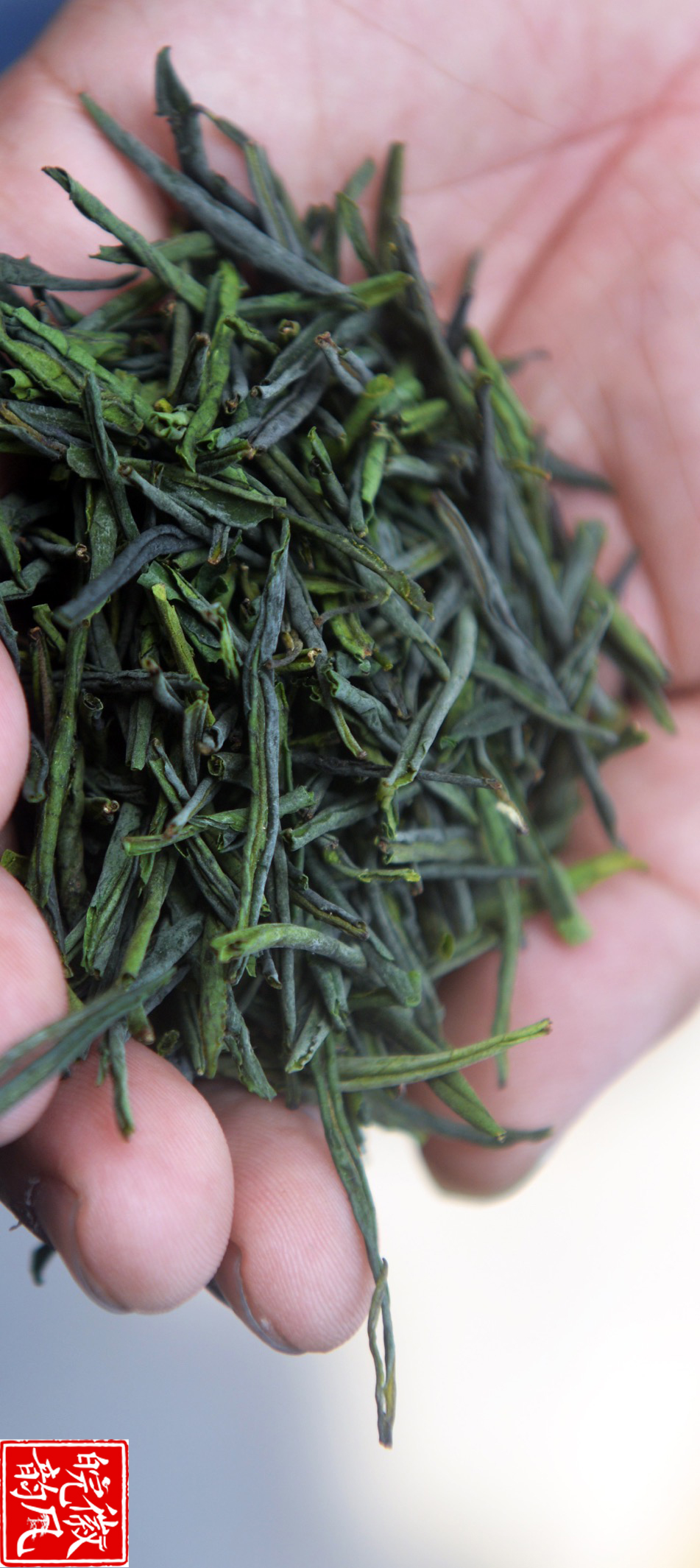
Heavy heat: Heavy heat requires fierce fire and high temperature. First, align and squeeze the charcoal, burn the kiln well, and makes the flames burst into the sky. Then put 3 to 4 kilograms of leaves into each roasting basket. Two people lift the basket, bake it on the charcoal fire for 2 to 3 seconds, then put it down to turn over the tea leaves. To make full use of the charcoal fire, 2 to 3 roasting baskets can be baked in turn until the leaves are green with gray, then put the tea leaves into an iron cylinder while they are warm, squeeze on them and seal them with solder for storage.
|Production: Anhui New Media Group Huifeng Wanyun Studio |Translated by Zheng Chen
|